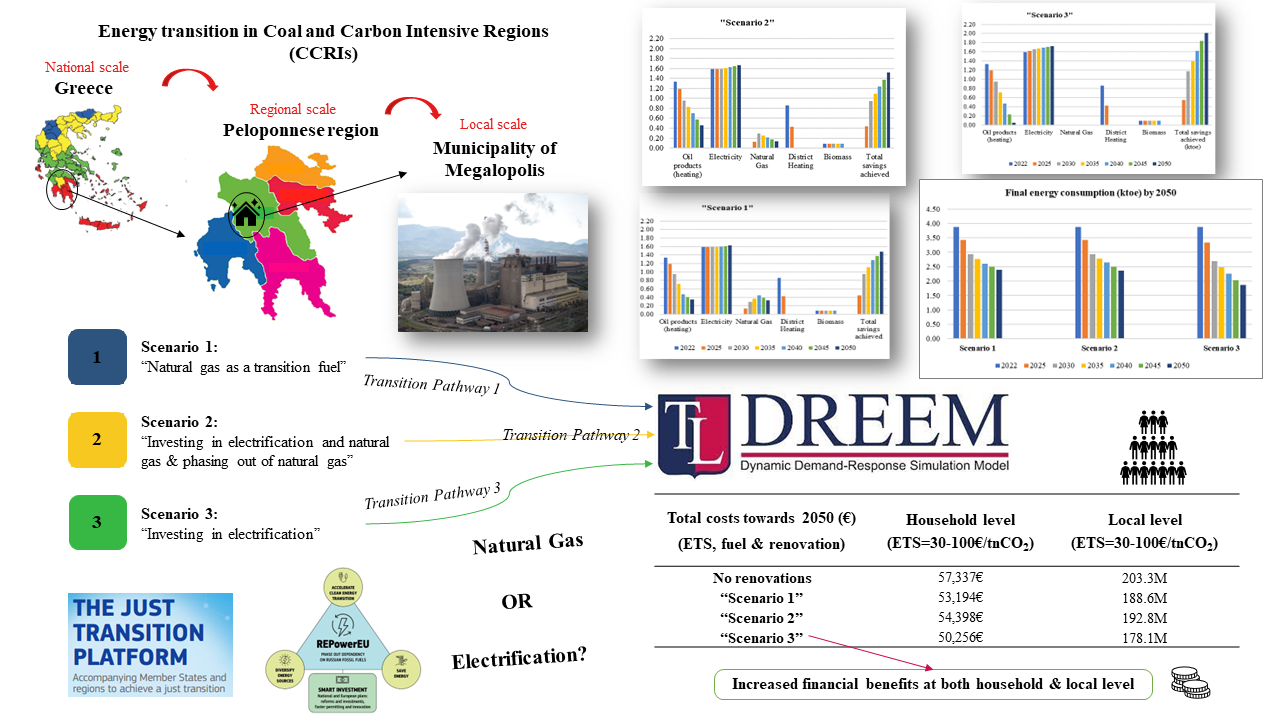
The socially fair and inclusive clean energy transition of coal regions in Europe is envisaged as a top priority of the European Union (EU) with a wide array of funding available to finance the transition in these regions.
The municipality of Megalopolis in Greece is characterised as a coal and carbon intensive region, since the operation of the open-pit lignite mine and the “Megalopolis III” and “Megalopolis IV” lignite-fired units has been the dominant economic activities in the region, while a remarkable percentage of the local workforce is employed there. According to the latest version of the National Energy and Climate Plan (NECP), the lignite mine as well as the lignite units were planned to be withdrawn by 2023. Nevertheless, recent developments over the past three years, i.e., the unprecedented COVID-19 pandemic and Russia’s invasion of Ukraine, have ignited discussions about the potential postponement of the decommissioning of the lignite activities to ensure energy security at a national level.
Megalopolis numbers 3,545 households with a district heating system covering 30% of the demand for heating and hot water of the municipality. According to the existing plan, a gas distribution network is under construction and residents will be exempted from connection fees, while the cost of replacement of existing heating systems with gas boilers will be subsidised. However, considering the EU’s “REPowerEU” plan to diminish dependence on Russian natural gas, the existing plan for the municipality of Megalopolis may have to be revised, as the decision to invest in new natural gas infrastructure could cause a lock-in effect exposing households to high energy costs for the next decades.
In this context, we explored the following Research Question (RQ):
RQ: When it comes to the energy transition in the residential sector in Megalopolis, should national planning invest in new natural gas infrastructure, or should we invest in electrification right from the start?
Using the Dynamic high-Resolution dEmand-sidE Management (DREEM) model we simulated 3 different energy transition scenarios: i. “Scenario 1: Natural gas as a transition fuel”, ii. “Scenario 2: Investing in electrification and natural gas & phasing out natural gas”, iii. “Scenario 3: Investing in electrification”.
Modelling results showed that investing in electrification increases the financial, environmental, and, thus, social benefits of the energy transition by 2050 in the residential sector in the municipality of Megalopolis, while it also leads to lower total costs at both the household and the local level, in comparison to investing in new natural gas infrastructure. Moreover, in the long run, households’ extra charge from the replacement of existing oil boilers with gas boilers could amplify the energy poverty phenomenon in the municipality as it could result to increased costs. To avoid this potential development, tailored energy efficiency support programmes for such regions in transition, promoting the electrification could directly contribute to the reduction of household energy costs and indirectly to the labour market and economic growth, especially in the short term.
Models used
DREEM
Dynamic, object-oriented, and equation-based high-resolution simulation model
DetailsSENTINEL case study
Case study: National – Greece
Country-specific case with focus on coal phase-out together with a large domestic renewable potential.
Details